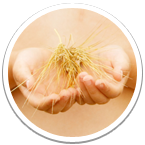Legionella bacteria in water systems
Buildings’ water systems receive small amounts of microbes that are contained in both natural water and water treated at water supply plants. Microbes multiply in water systems if the growth conditions are favourable. They can impair water quality and some of them may pose a health risk.
The most widely known pathogens in water systems are Legionella bacteria. They can cause illness, especially if they enter a person’s airways via water aerosols.
In addition, illnesses can also be caused by a dust-emitting substance containing Legionella. For example, a composted soil or substrate may cause legionellosis when it enters the lungs.
More detailed information on the transmission of Legionella, the symptoms caused by it and the detection and treatment of legionellosis:
Legionella (on the Infectious diseases and vaccinations website, in Finnish)
Presence of legionellae in water systems
All water systems containing hot water are potential sites for legionellae growth.
The systems that are particularly favourable for the growth of Legionella and the harmful exposure of humans include, for example:
- domestic hot water systems
- various cooling systems
- whirlpools.
In these systems, the water temperature often favours the growth of legionellae and aerosols form as a result of the operation and use of the equipment.
It should be noted that high concentrations of Legionella may also be present in cold household water systems.
Among other common environments favourable for the growth of legionellae are the following:
- Humidifiers
- Process water systems
- Wastewater systems
Further reading: Factors affecting Legionella growth
Legionellae can cause illness if they are present in sufficient concentrations in the water system and they spread into the air that people breathe.
In cases of illness, the Legionella content of the water in the source of infection has usually been approximately 1000–1 000 000 colony forming units per litre (cfu/l). Even lower Legionella concentrations in water can cause illnesses, as the likelihood of illness is affected by such factors as the pathogenicity of the Legionella population and the health of the exposed person.
Legionella concentrations are usually low in natural waters, a few hundred units per litre at the most. Exceptions to this include hot springs and water bodies located downstream of waste water treatment plants' discharge sites, from which higher concentrations can sometimes be detected.
Preventing the growth and health risks of Legionella
The Legionella concentration may increase if the water temperature is between 20 and 45 °C, as this temperature range is favourable for legionellae.
The growth of Legionella can usually be prevented by ensuring that the household water is sufficiently cold (below 20 °C) and that the hot water is sufficiently hot (often at least 55 °C) throughout the water system, which also includes the end of the cycle.
Some water systems also use chlorination and other microbial pesticides, also known as biocides, to combat legionellae.
Further reading: Preventing the growth and health risks of Legionella
Legislation and guidelines relating to legionellae
Finnish legislation guides the control of Legionella bacteria in housing, workplaces and recreational areas. In addition, several sets of guidelines produced through international cooperation are in use in Finland for legionellae infection monitoring and legionellae control.
In Finland, doctors report the cases of illness caused by Legionella to the National Infectious Diseases Register. The laboratories also report to the same register any positive Legionella bacteria findings. In all cases of infection, efforts are made to identify the source of the infection and other related cases.
To determine the source of infection, the local environmental health authority or the Finnish Institute for Health and Welfare may take environmental samples. The samples are analysed in a laboratory that carries out Legionella analyses, such as the Finnish Institute for Health and Welfare's Water Microbiology Laboratory in Kuopio.
Clinical samples and Legionella populations originating from the environment are categorised more precisely in the Expert Microbiology Unit of the Finnish Institute for Health and Welfare in Helsinki.
If harmful concentrations of legionellae are detected in a water system in a case under investigation, control measures are taken and control samples are used to ensure that the measures are effective.
Further reading: Legislation and guidelines relating to legionella
Microbiological water analysis
Analysing water samples and determining sources of infection
Laboratory studies of Legionella (in Finnish)
Clinical samples and typing of legionella strains (on the Infectious Diseases and Vaccinations website)
Legionella (in Finnish)
Information on transmission, detection, symptoms and treatment (on the Infectious Diseases and Vaccinations website)
Drinking Water Directive (EUR-Lex)
Directive (EU) 2020/2184 of the European Parliament and the Council on the quality of water intended for human consumption
ESGLI: Legionella infections
Website of the ESCMID Study Group for Legionella Infections (ESGLI)




